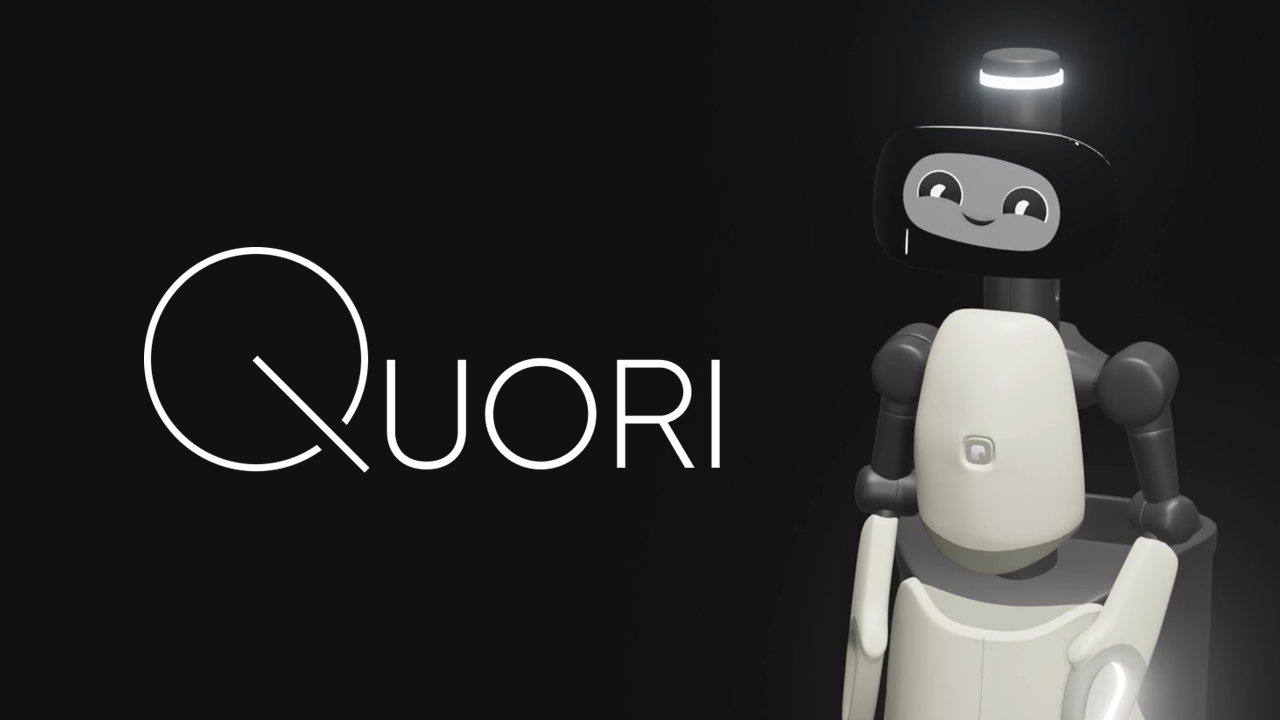Partners
The UR-RAD 2025 symposium has partnered with the Quori Community!
Read below for how you may be eligible for participation support to attend UR-RAD 2025 in-person.
What is Quori?
Quori is a not-for-profit open-source, modular, social robot platform for the human-robot interaction (HRI) research community.
Quori has been in development for 10 years now, with the first 10 Quori 1.0 units distributed to 10 collaborative research teams (35 labs across 11 universities) across the United States. Quori 1.0 was deployed in a variety of real-world settings, including the Philadelphia Museum of Art, where it autonomously interacted with 183,000+ museum visitors in a 6-month live exhibit.
We recently received additional funding for the development of Quori 2.0, an enhanced redesign to serve as a general-purpose, open platform for the HRI research community. This effort includes the manufacturing and distribution of 50 Quori 2.0 robots to sites around the world. Quori 2.0 is being developed by collaborators from Oregon State University, the University of Pennsylvania, Semio Community, OLogic, and IK Studio.
Why Partner with UR-RAD?
At UR-RAD 2025, the Quori team is looking for feedback from the robotics community to help make the Quori platform even better!
We seek to gather the existing US-based Quori 1.0 community, and expand it globally in a Quori 2.0 community that includes robotics researchers and practitioners from academia, industry, and the public sector.
The new Quori website/platform is currently in development, and conversations at the UR-RAD symposium will help guide its contents.
Select UR-RAD contributions relevant to the Quori community will be eligible for sponsored participation support to attend UR-RAD 2025 in-person! Specifically, Quori-related papers should be clearly relevant to one or more of the topics below and must include at least a section that details the technical applicability of the contribution to open-source social robot platforms, including, but not limited to, Quori. If interested and relevant, please email us at urrad.symposium@gmail.com after the paper is submitted, simply stating that you would like for your contribution (paper title and ID) to be considered for Quori travel support.
To be considered for an award, submissions should be submitted by either of the two submission deadlines (see Call For Papers).
Of particular relevance to the Quori community, UR-RAD emphasizes how human-robot interactions can be captured as computational artifacts, or representations. For social robots like Quori, this includes social behavior representations, multi-layered authoring architectures, end-user programming tools, and more. Specifically, the Quori community is interested in topics and representations of speech-based behaviors including linguistics (speech recognition, text-to-speech, syntax of language, etc.) and vocalics (volume, pitch, rate, etc.), as well as body language-based behaviors, including proxemics (social spacing), haptics (touch), oculesics (eye gaze), kinesics (face, hand, and body gestures), deixis (spatial referencing), and chronemics (turn-taking and back-channeling). Thinking critically about these representations is essential to shaping Quori and the next generation of social robot platforms.
Many of UR-RAD’s topics of interest are deeply aligned with the Quori community. We welcome paper submissions (long, short, or abstract-only) on Quori-related topics including, but not limited to:
- Representations for social behavior: How might human-robot interactions be represented in a standardized way across open robot platforms, such as Quori?
- Surveys or reflective analyses: What trends or insights from past social robotics work (including the social behaviors listed above) might shape the design of hardware, software, aesthetic, character, behaviors, etc.?
- Standardized representations: What formalizations could support reusability and generalization between deployments of different models of social robots?
- Stakeholders: Who are the intended users and developers of social robots like Quori, and how do their needs shape design of representations for application development?
- End-user development and learning: In the advent of technology like large language models (LLMs) and foundation models, what robot behaviors should be manually authored vs. autonomously learned? What are the implications of these decisions for how various types of users and developers interact with them?
- Physical form factor: How does a robot's physical embodiment shape or constrain underlying representations?
- Software infrastructure: What existing and novel software systems can support robots (such as Quori) for autonomous or teleoperated human-robot interactions?
If you intend to submit a paper related to Quori
Contact us at
urrad.symposium@gmail.com
Use the subject line, [UR-RAD] [Quori] Intent to Submit,
and include the following in the body of the message:
- Tentative title
- Tentative author list
- Tentative keywords
This step is optional, but will aid in our planning for
reviewers.
Note that at least one author from each paper
will be expected to review 2-3 UR-RAD papers themselves.
